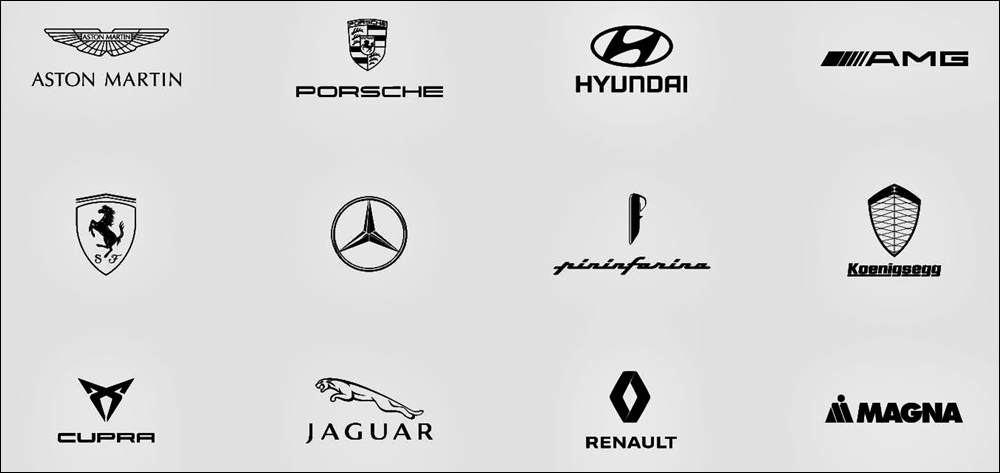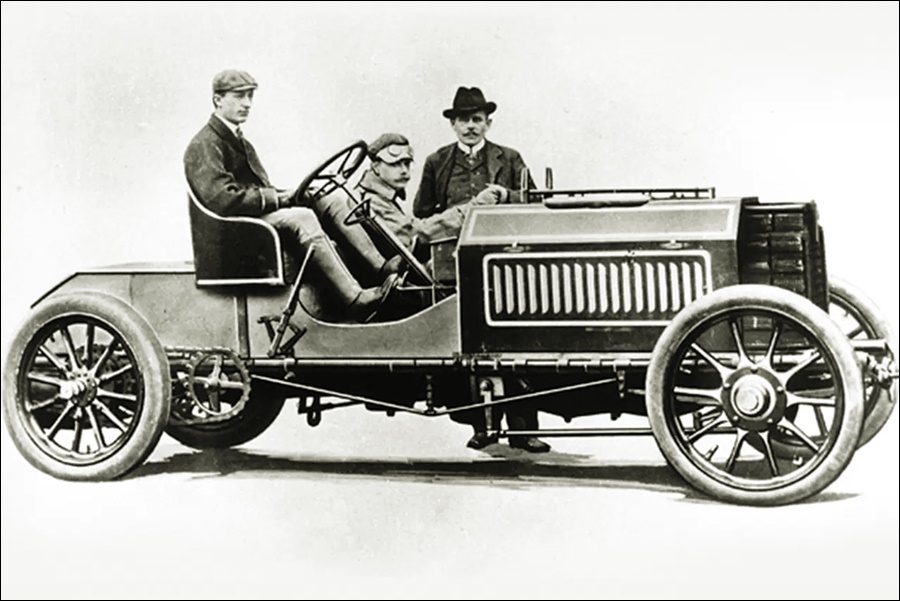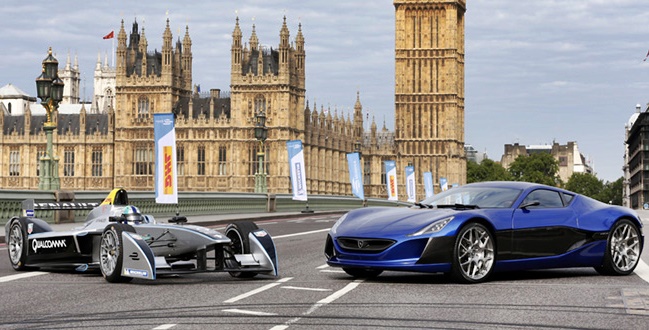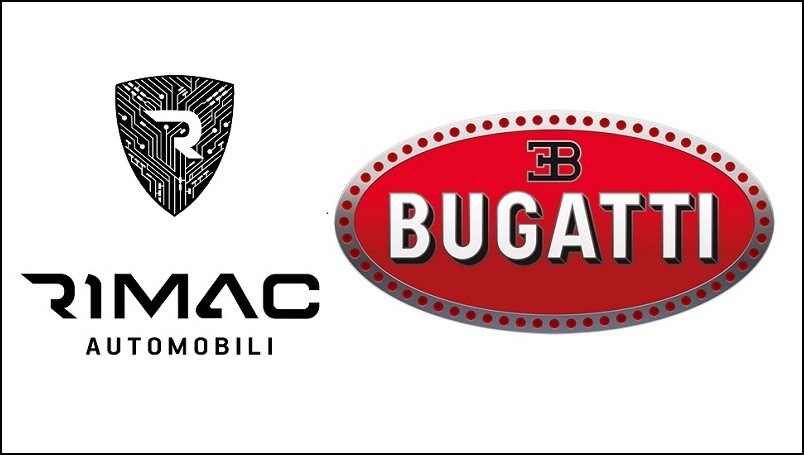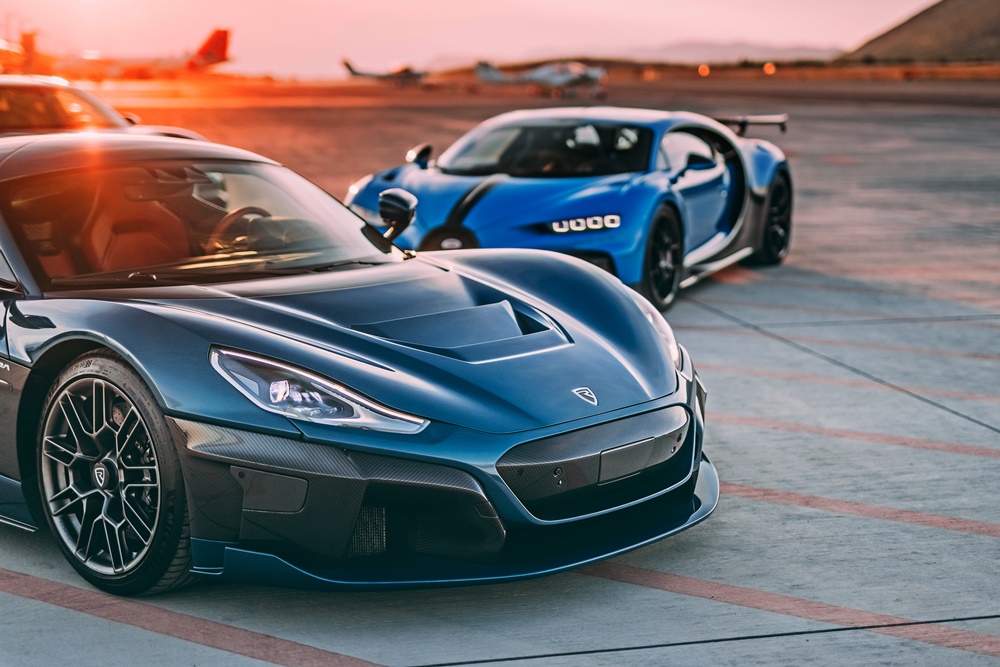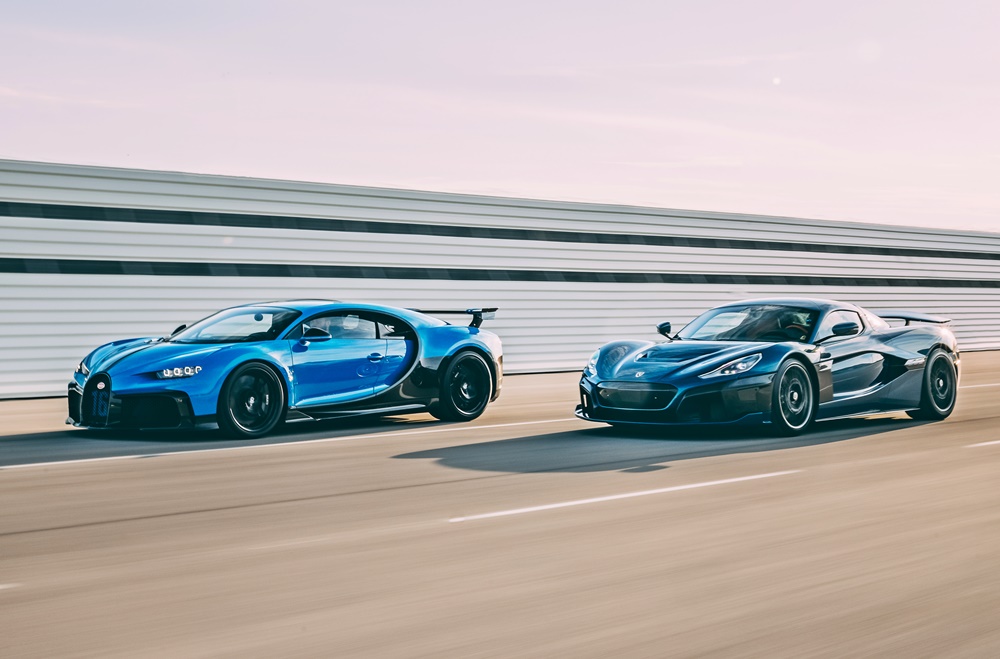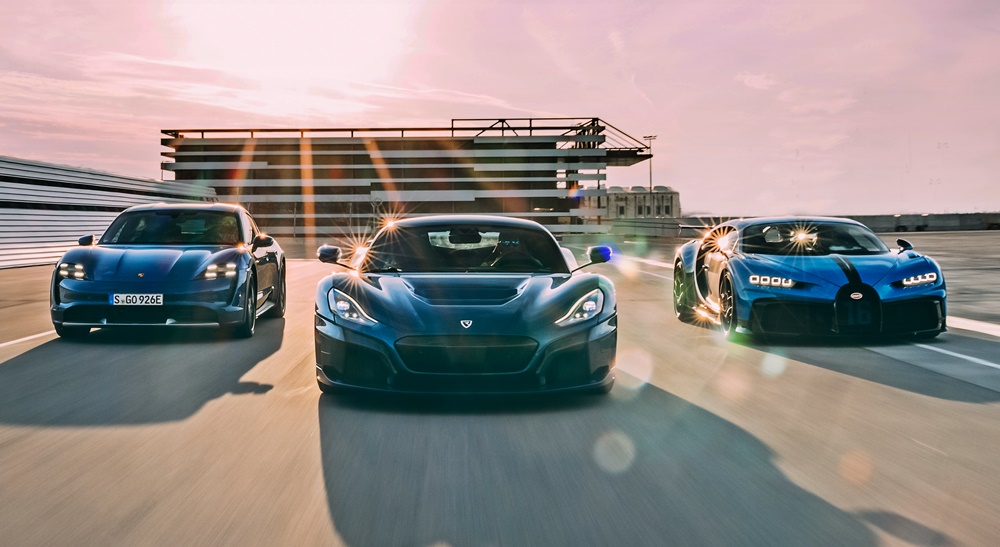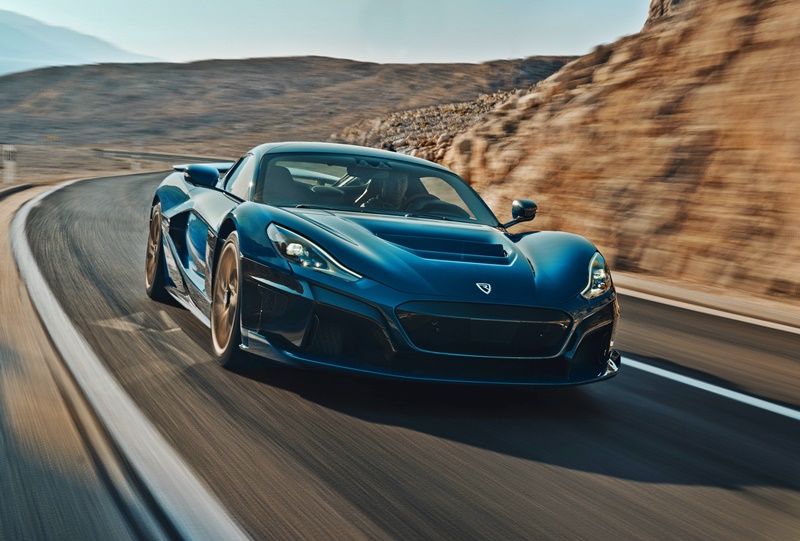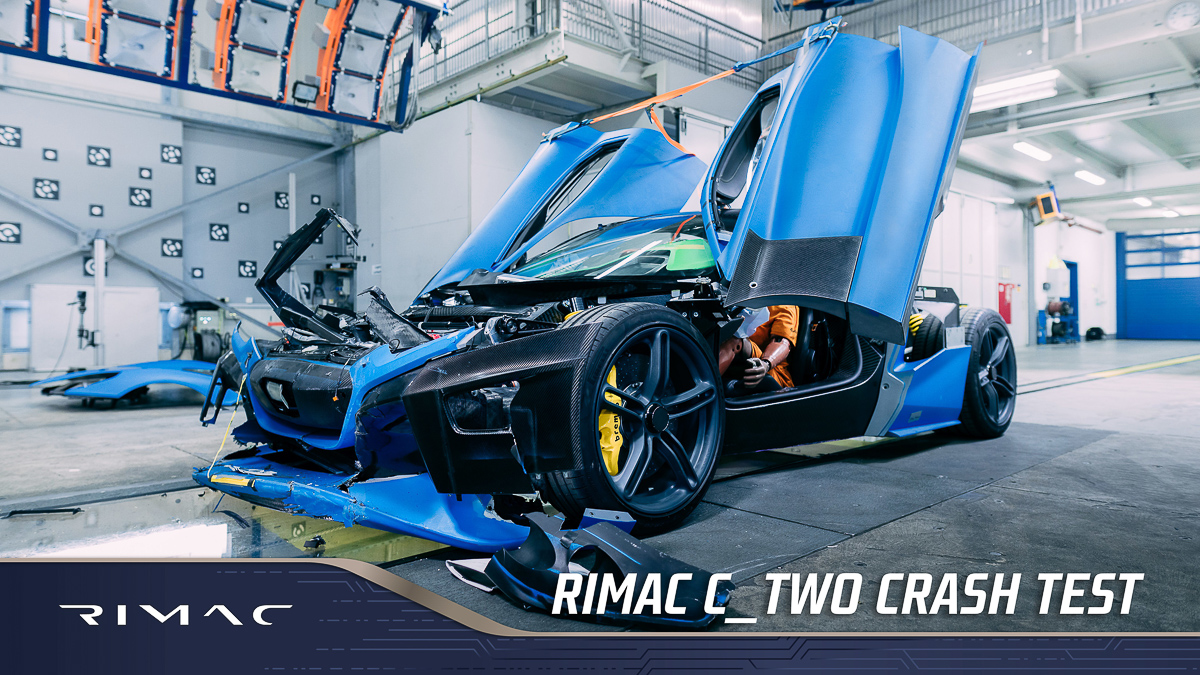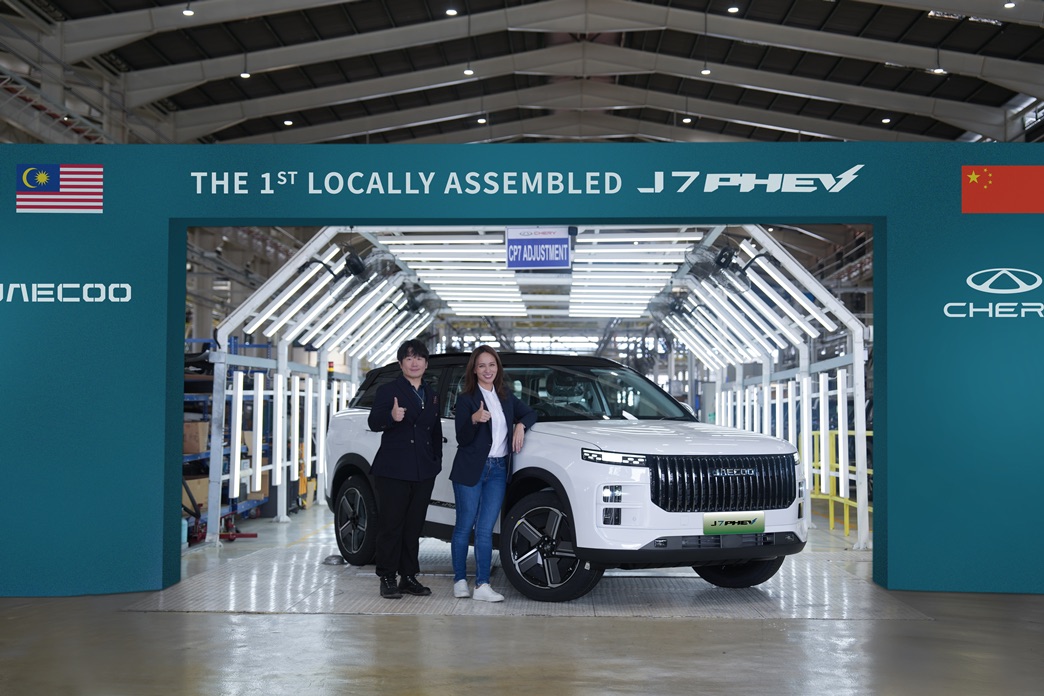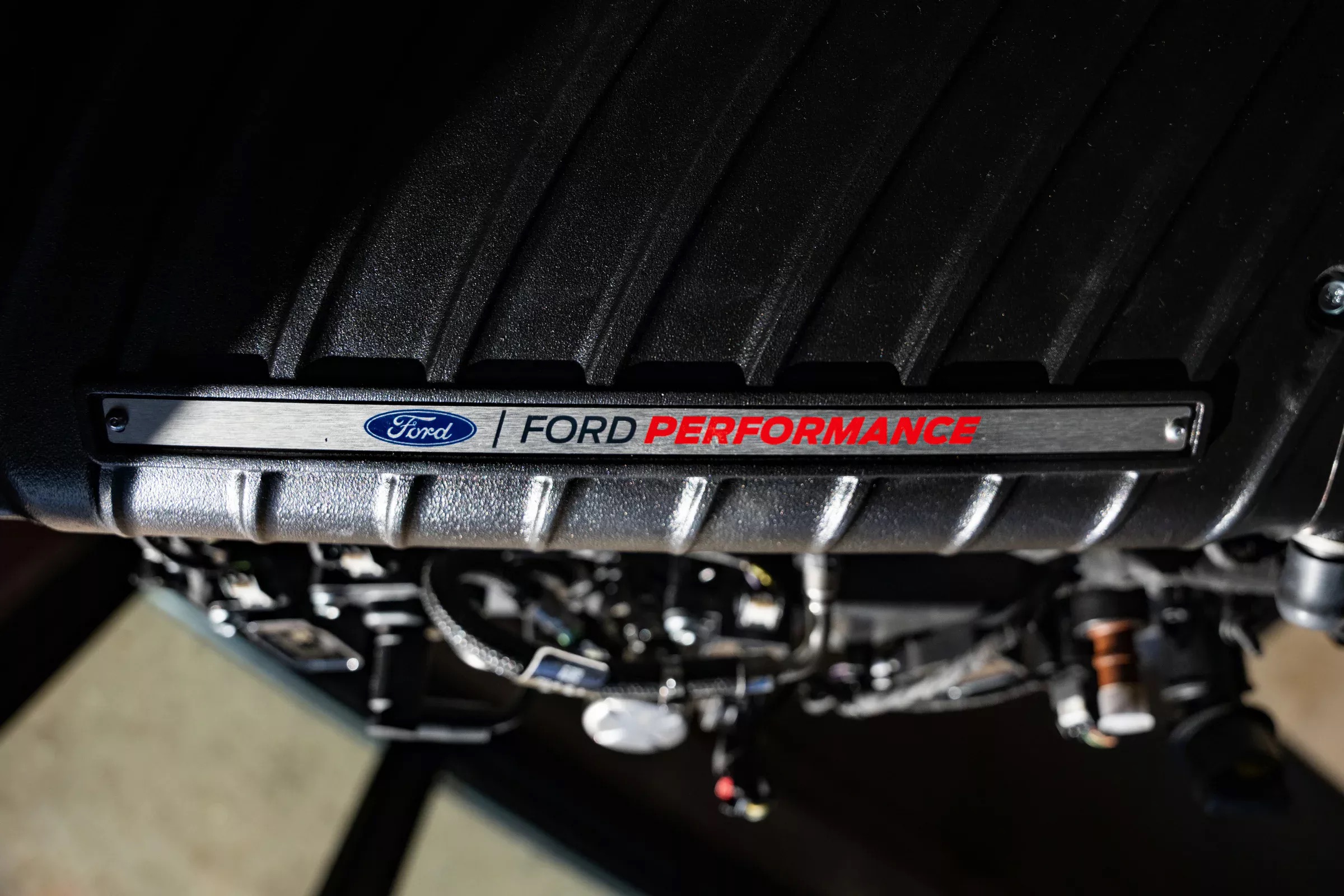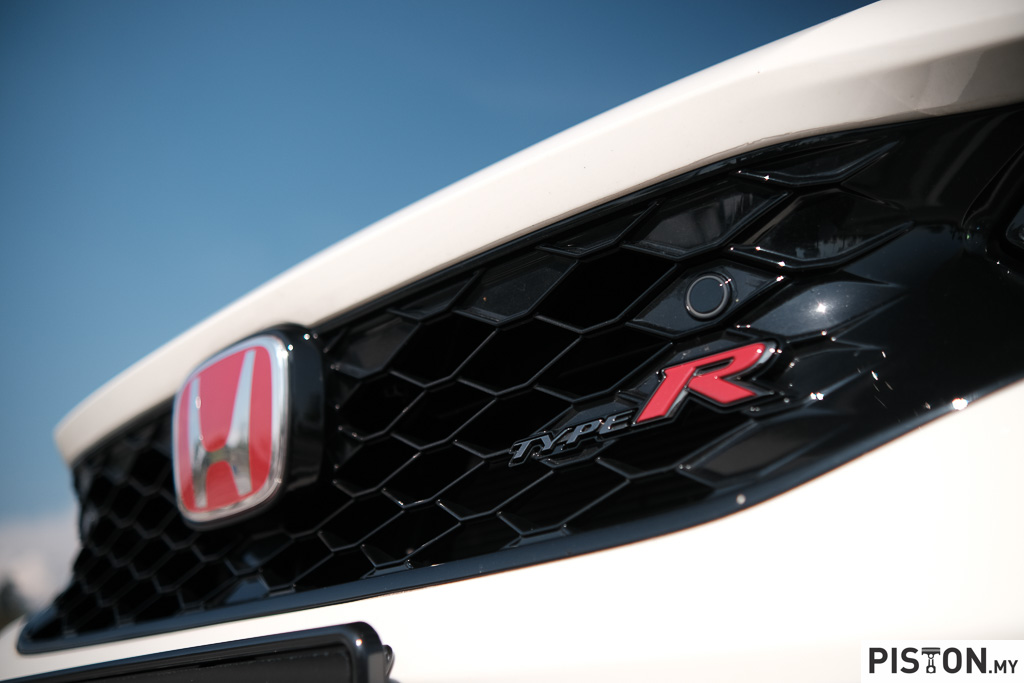
Croatia, a country across the Adriatic Sea from Italy, is not a particularly large country. Its population of 4.13 million is less than Singapore’s 5 million+ and annual sales volume has been around 63,000 units (apart from last year when new vehicle sales contracted worldwide due to the pandemic). It has a fairly active auto industry with many factories producing autoparts for export as well as a few domestic carmakers.
Notable among these is 11-year old Rimac Automobil, an ambitious carmaker which specialises in high-performance electric cars. Its earlier Concept One gained global exposure as an official track car during the first season of the all-electric Formula E championship in 2014. Since then, the company has continued to develop models with new technology and its latest is the Nevera hypercar. The Nevera is the production-ready iteration of the Rimac C_Two concept car, which was revealed at the International Geneva Motor Show in 2018. Since then, Rimac’s engineers have refined their new flagship through an extensive development program.
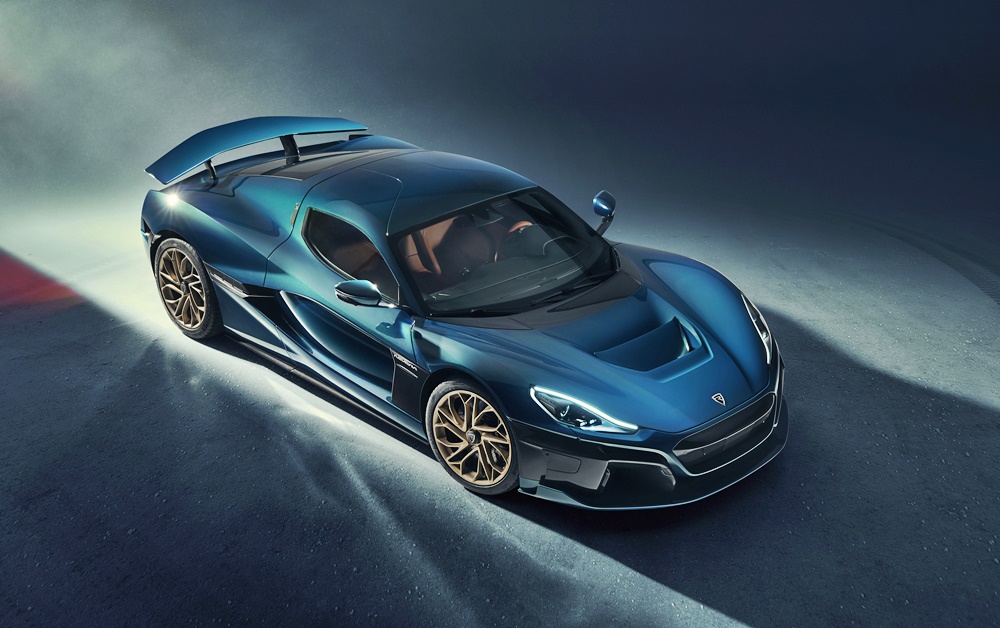
A 10-year ‘impossible’ journey
“This is it. This is the car I had in mind when I embarked on the ‘impossible’ journey ten years ago. All our hard work has resulted in the Nevera – our record-breaking hypercar. This car was born to outperform, and to raise the bar, redefining the norm for performance cars. And not only in performance – but as an all-around package,” said Mate Rimac, founder and CEO of the company.
“The Nevera proves what is possible when there are no restraints placed on technology, development, or ambition. We have now unveiled a car that pushes the hypercar market to a higher level, we have utilized the full potential of the electric powertrain today, proving what we’ve always been saying – that electric hypercar, in the form of the Nevera, is beyond exciting, and that is as thrilling on the track, as it is crossing continents,” he said.
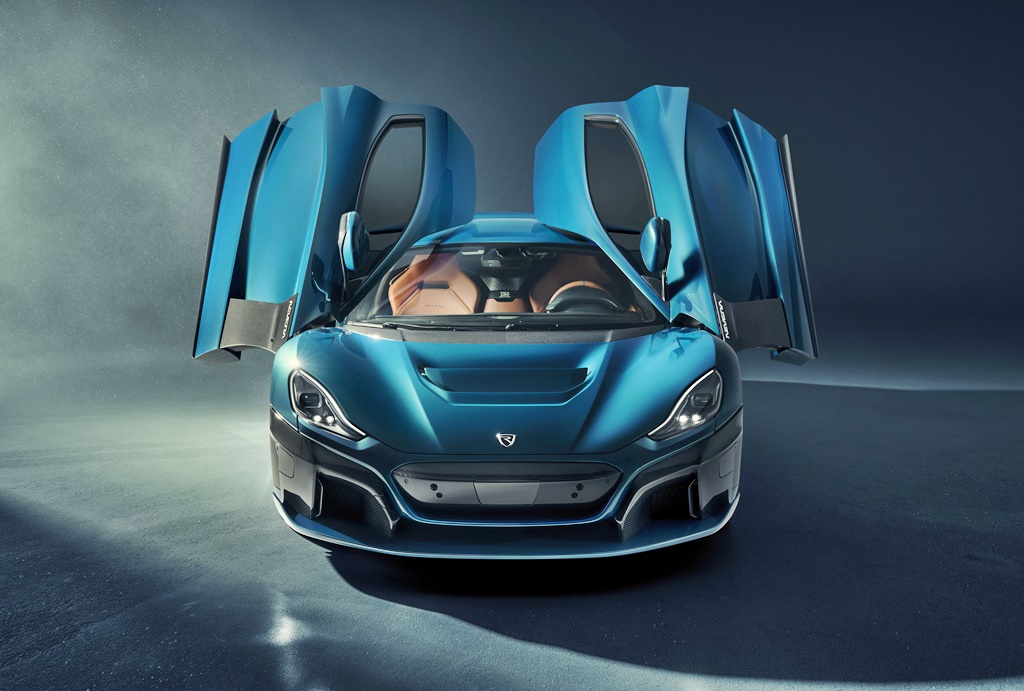
Signature ‘cravat’ feature
Rimac favours lean and effective engineering at every stage, and that philosophy is exemplified in the form-follows-function nature of the Nevera’s design. It is applied to every single detail, including the car’s signature ‘cravat’ feature, which is incorporated into its flanks. It is functional too, serving as an air intake for the rear cooling systems.
As the design evolved, many changes were made to the Nevera’s bodywork; for example, the redesigned air diffusers and intakes deliver a 34% improvement in aerodynamic efficiency over the early prototypes. The profile of the bonnet, the shape of the pillars and the design of the diffusers, splitters and radiators have all been intensively analysed and refined to improve airflow and downforce. Inlets and cooling channels have been painstakingly developed to increase the cooling efficiency of both the brake and powertrain systems, resulting in a 30% improvement at low speeds and a 7% enhancement at high speeds.
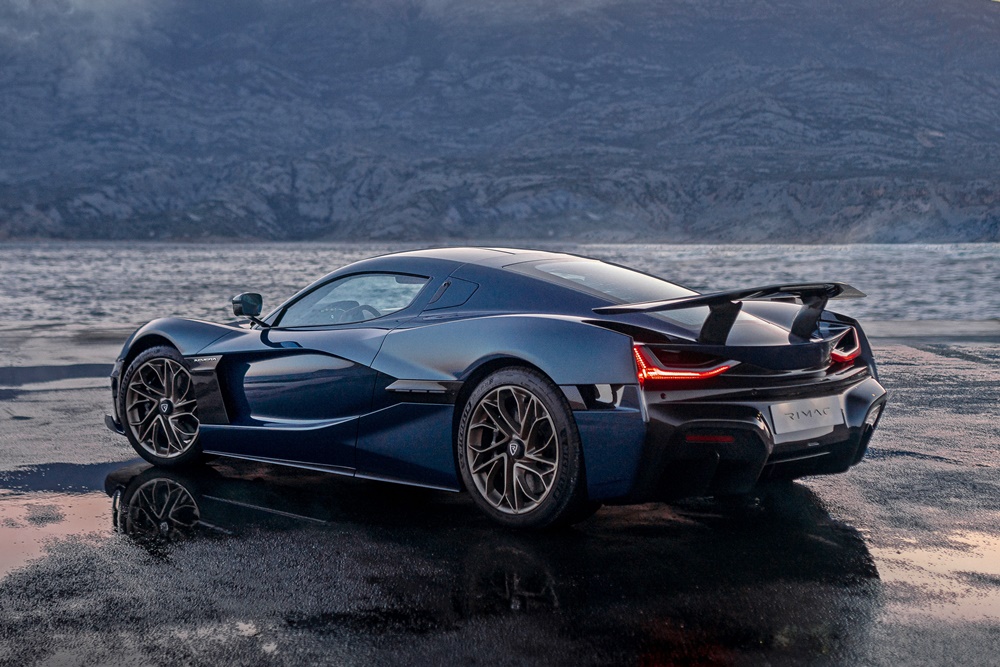
Rimac has also created many new innovative active aerodynamic elements for better cooling, performance, stability, and efficiency. The front bonnet profile, underbody flap, rear diffuser and rear wing can each move independently, driven by complex algorithms that provided the optimum aerodynamic configuration for every driving situation. Switching from ‘high downforce’ to ‘low drag’ mode reduces aerodynamic drag by 17.5% to create a drag value of 0.3 Cd. Changing back into ‘high downforce’ mode increases downforce by 326%.
World’s most advanced monocoque construction
The hypercar’s groundbreaking monocoque incorporates a bonded carbonfibre roof, integrated structural battery pack and rear carbonfibre subframe. This is believed to be the largest single carbonfibre piece in the entire automotive industry. Weighing less than 200 kgs and utilising 2,200 carbon fibre plies with 222 aluminium inserts, the monocoque encases the car’s battery to form a compact yet incredibly strong structure.
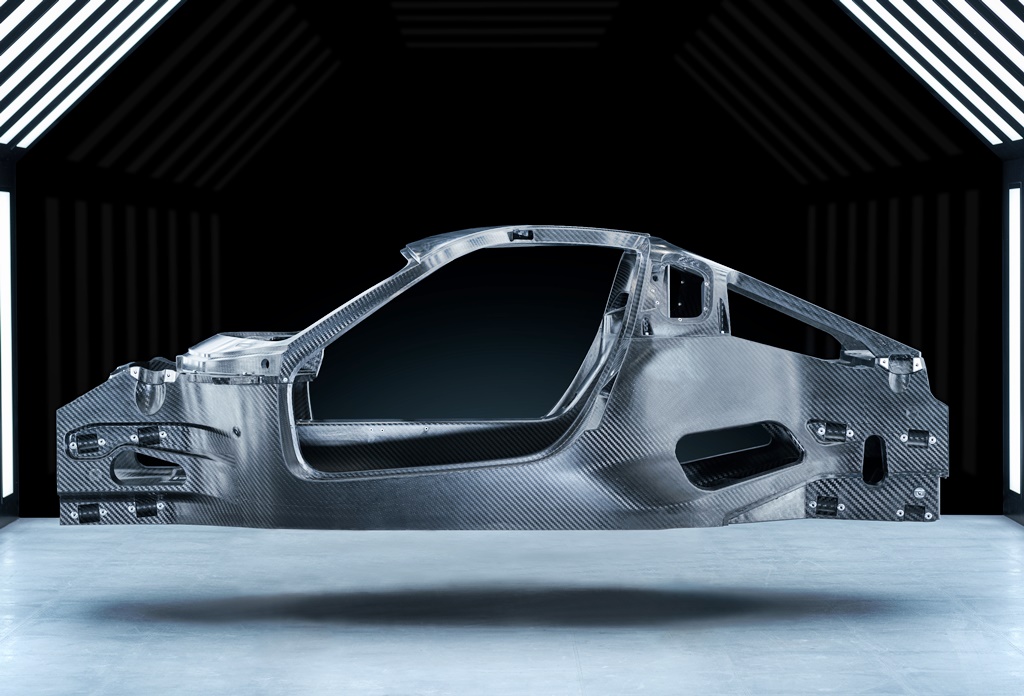
Powertrain developed in-house
The key to the Nevera’s high performance is Rimac’s pioneering electric powertrain. The unique H-shaped, liquid-cooled, 120kWh, 6960-cell battery pack was designed from scratch by. Capable of producing 1.4MW of power, the lithium-manganese-nickel battery pack also forms an integral part of the car’s core, adding 37% structural stiffness to the carbonfibre monocoque.
The battery pack’s optimum positioning low and central within the car’s floor contributes to an ultra-low centre of gravity. This helps create an excellent 48:52 front/rear weight distribution and the best possible handling balance. High-power recharging can ‘refuel’ an empty battery pack to 80% in 19 minutes, it is claimed, and the range is 550 kms.
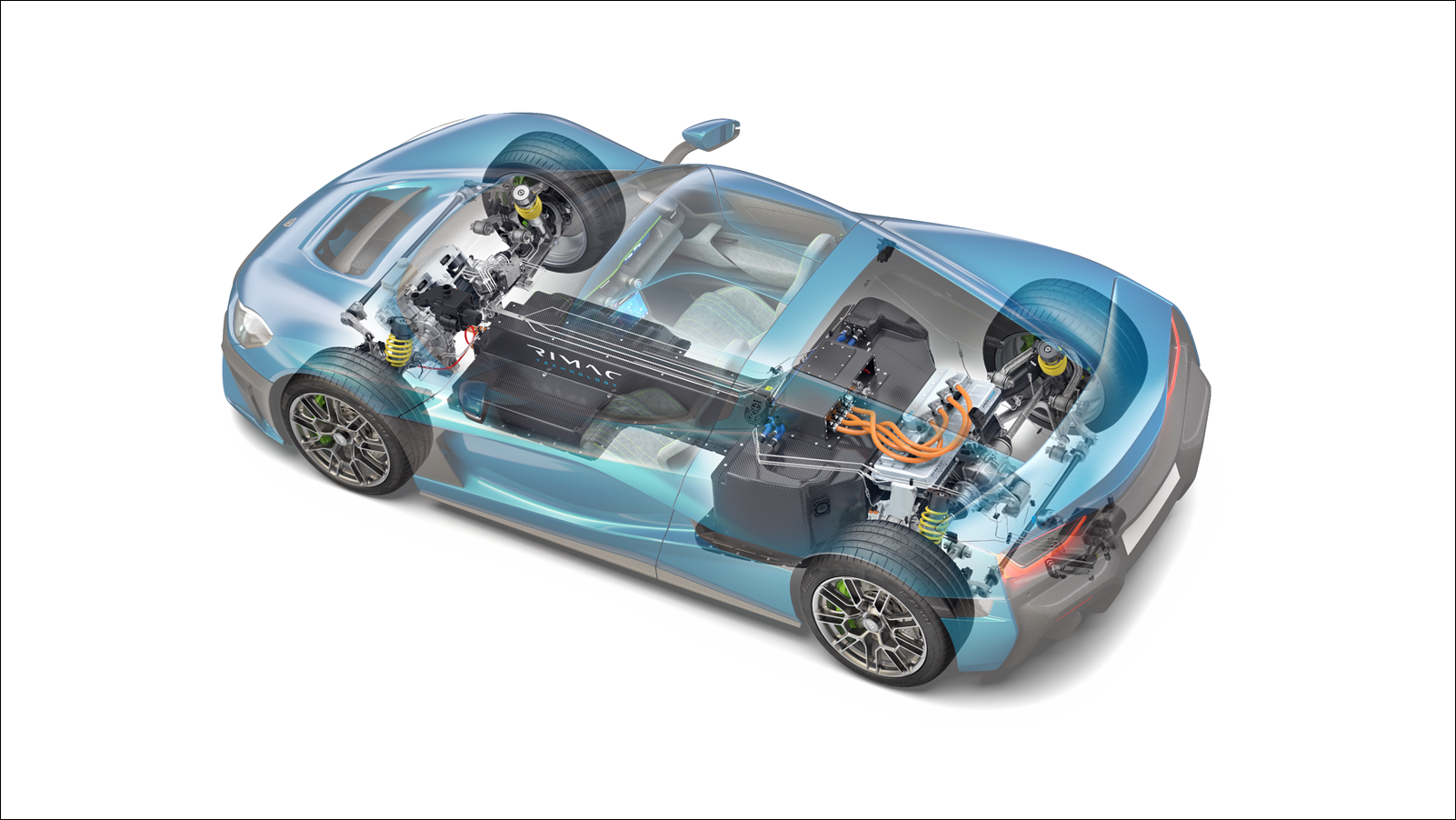
Four bespoke surface-mounted permanent magnet motors drive the four wheels individually. Together, they generate 1,914 hp and 2,360Nm of torque, which is triple the output of a ‘conventional–engined’ supercar. The front and rear wheels are each connected to a pair of single-speed gearboxes. The electric motors are 97% efficient and completely maintenance-free throughout their operating life. The Nevera is claimed to take 1.85 seconds from 0 to 60 mph (96 km/h) and if there is a road which is long enough – and no speedtraps – it should be able to reach a maximum speed of 412 km/h.
An experienced person will find the available driving modes useful for a more engaging drive. The SPORT mode sharpens the response of the throttle, brakes, suspension and steering, while DRIFT mode sends more torque to the rear wheels to accentuate oversteer and help hold the car in a controlled power slide on the track. In expert hands, TRACK mode sets the Nevera to full, unrestrained configuration to allow drivers to exploit the car’s full potential.
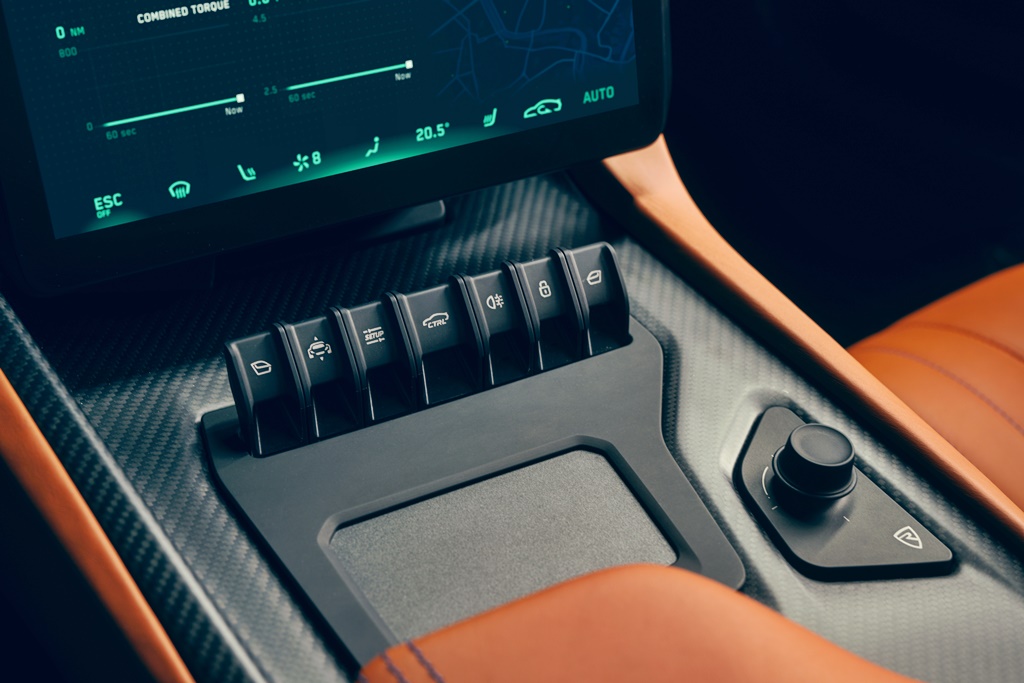
Minimalist design cabin
The Nevera is as much a capable grand tourer as it is a performance hypercar with space for two occupants and their luggage. Configured for both track driving and comfort, the layout of the cockpit is divided into two zones. Digital screens eliminate switchgear, with only essential tactile controls present, thereby freeing up space.
The cockpit features a trio of high-definition TFT screens, which present as much, or as little, information as the user requires. The focus of the top segment is entirely placed on driving pleasure and performance, while the lower part houses the infotainment system, comfort controls and driving data. From the cockpit, the driver can monitor every aspect of the car’s performance with real-time telemetry – downloadable to a laptop or smartphone for later review.
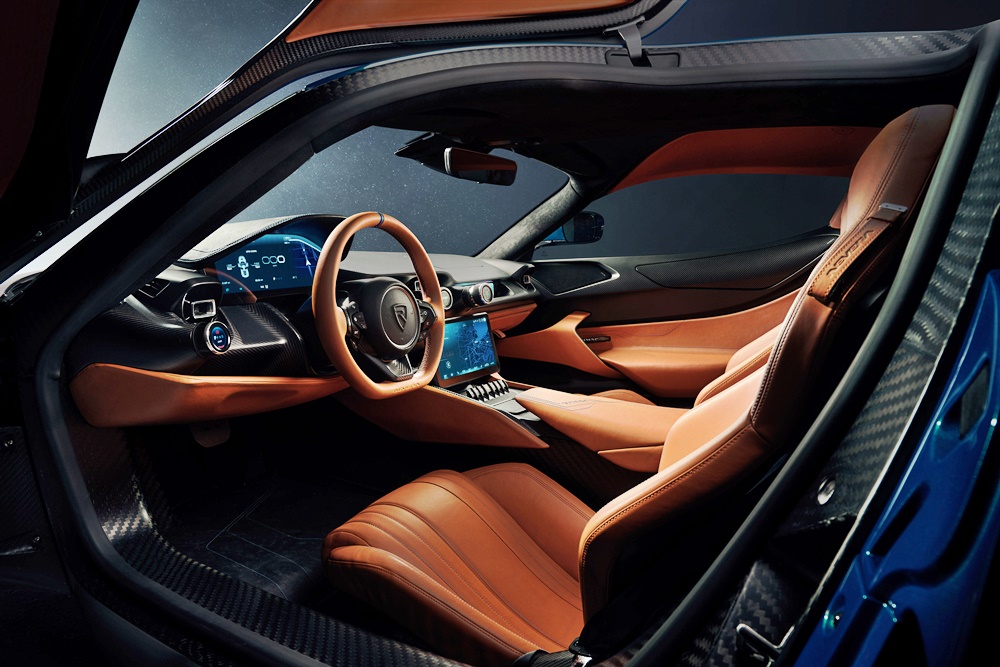
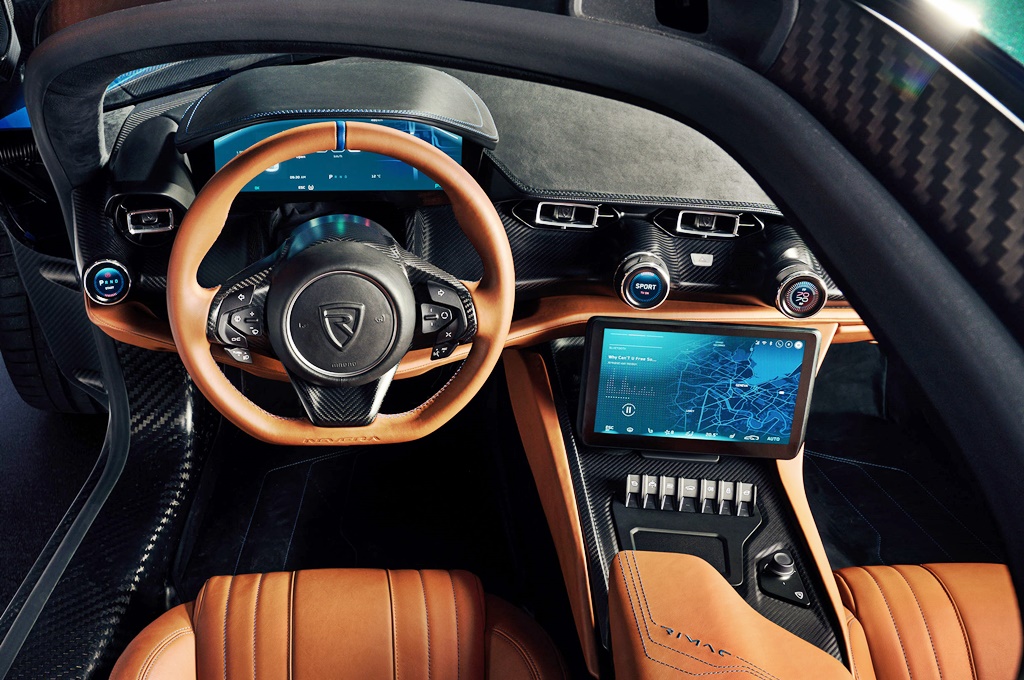
World’s first AI Driving Coach
To enable drivers to extract maximum performance and help them further develop their track driving skills, Rimac has developed the world’s first AI (Artificial Intelligence) Driver Coach. Using 12 ultrasonic sensors, 13 cameras, 6 radars, and the very latest NVIDIA Pegasus operating system, the Rimac Driving Coach adds an additional, immersive experience behind the wheel. The system overlays selected race circuits in real-time, offering clear and precise audio and visual guidance, to enable drivers to perfect their racing lines, braking and acceleration points and steering inputs.
Only 150 units will be available and no two Neveras will leave the factory looking the same or bearing the same specification. The customer will have the ability to choose from a comprehensive range of bespoke trims and material options. In addition to the company’s premium individual personalisation program, Rimac will offer its flagship in various editions: GT, Signature, Timeless or Bespoke. The price of a Nevera starts at 2 million euros (around RM10 million) but after all the personalisation, the final amount will obviously be more.
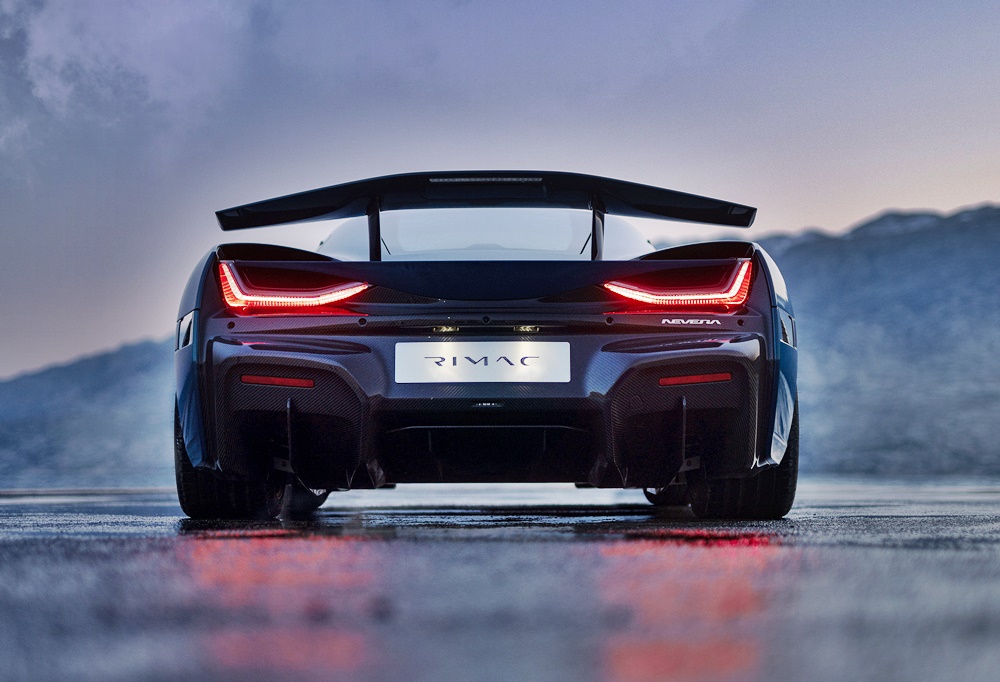
Aspark Owl – first Japanese electric hypercar – claims acceleration record



